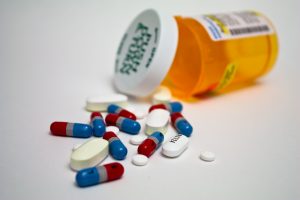Many people do not think that driving while under the influence of drugs is a crime akin to drunk driving, but driving while intoxicated by drugs, such as marijuana or prescription medications, is driving under the influence, nonetheless. The National Highway Traffic Safety Administration recently released a report noting that while the number of drivers that are driving under the influence of alcohol is gradually decreasing compared to years past, the number of drivers that are driving while under the influence of drugs is on the rise.
Both illegal drugs and prescription medications have an impact on a person’s ability to operate a motorized vehicle. These substances can inhibit judgement, depth perception and one’s ability to determine how fast they are moving compared to other vehicles – all of which make for dangerous driving. Many people do not believe that they will be caught driving under the influence of drugs, because unlike with DUIs and breathalyzer testing, there is no roadside chemical test for drugged driving.
However, when an officer pulls over a driver for suspected driving under the influence, the officer is assessing the driver for signs of drug use. This can include involuntary muscle spasm, speech patterns that are faster than would be expected or highly excited or, alternatively, speech patterns that are remarkably slow or relaxed in light of being pulled over by law enforcement.
Various Illegal Drugs Impact Driving Abilities In Different Ways
Different types of illegal drugs affect people in certain, fairly predictable ways. Some of the most commonly used illegal drugs, and how the drug impacts driving ability, are discussed below.
- Methamphetamine use prompts the user to experience a state of euphoria, which includes a sense of excitement that can cause an increase in the heart rate and a spike in the blood pressure of a driver. One of the less common side effects of methamphetamine use is that of hallucinations or delusions, which the user has trouble distinguishing from reality. This can be particularly dangerous while operating a vehicle.
- Like meth, cocaine usage prompts the user to experience immense euphoria for a period of time and then a sudden and significant crash. While a state of alertness and excitement are the initial consequences of cocaine use, as the user peaks on the high, he or she will transition to an irritable, aggressive, disoriented or confused state which can be prove dangerous while behind the wheel.
- Driving while in an altered mental state, which occurs when a driver uses LSD, causes impairment in judgement, depth, space and time perception, and can produce hallucinations and delusions in a user. One of the side effects of LSD use is the development of tremors, which can also impact their ability to drive.
- Heroin causes a two-part high similar to cocaine. There is an initial period of euphoria, that transitions into a drowsy, relaxed state. This can cause slowed reflexes, delayed response time and fogginess or confusion as heroin users often are disconnected from what is going on around them during the relaxed part of a heroin high. Heroin users can also be gripped by bouts of nausea and vomiting, which could be dangerous if the user was behind the wheel.
- Marijuana users achieve a relaxed, euphoric state, with disorientation and a distorted sense of space, time and depth. If the particular type of marijuana consumed by the user is of a variety that produces paranoia in the user, this can cause the user to act irrationally and spontaneously, which is a dangerous state in which to operate a motor vehicle.
Contact A Massachusetts DUI Criminal Defense Attorney
If you have been charged with driving under the influence of illegal or prescription drugs, you need to consult with an experienced DUI criminal defense lawyer immediately. In addition to your DUI charges, you might also be facing severe drug charges as well.

